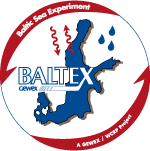Background > Ecology and Biogeochemistry
Ecological and biogeochemical characteristics
What is different in the Baltic Sea?
The Baltic Sea shows many characteristics which make it profoundly different from most parts of the oceans. First of all, the Baltic Sea water is brackish, i.e. it is a mixture of salt and fresh water. This has profound consequences for the plants and animals who live here, as salinity is a crucial physiological constraint for life in the sea. Most animals have a very narrow salinity tolerance, and this is the reason why the species diversity, i.e. the number of species is much lower in the Baltic Sea than in the oceans with a constant salinity.
Secondly, the constant vertical stratification leads to large water bodies in the deep basins which are oxygen depleted and which are rarely refreshed. The microbial processes in the anoxic water and its boundary to the overlying oxygenated water are responsible for the particular biogeochemical characteristics of the Baltic Sea. A visible consequence is the occurrence of the extensive surface blooms of cyanobacteria (blue-green algae).
Life in a salinity gradient
This salinity gradient has severe consequences for the species distribution in the Baltic Sea: marine species prevail in the western, while freshwater species are common in the northern end eastern parts of the Baltic Sea. Between these extremes, the number of species is low, which is a typical characteristic feature of estuaries, i.e. transistion zones between freshwater (limnic) and marine conditions.
|
Biogeochemistry: The case for cyanobacteria
Life and its chemical and geological enviroments are intensely interweaved. The chemistry of sea water determines the conditions of life in it, and life itself has a large impact on the chemistry of sea water; geological properties again have a strong influence on marine chemistry and biology. This is characterized by the term “biogeochemistry”. For the Baltic Sea, this is all the more the case. One example is the widespread occurrence of blue-green algae (cyanobacteria) in the Baltic Sea.
 So why there are so extensive blooms of blue-green algae in the Baltic Sea? Probably the most important reason is that they have a big advantage over other phytoplankton when dissolved nitrogen nutrients are scarce: they are able to use the atmospheric nitrogen (N2) which is also dissolved in surface waters. This process is called nitrogen fixation. Still, for the Baltic Sea, the story is more complicated. So why there are so extensive blooms of blue-green algae in the Baltic Sea? Probably the most important reason is that they have a big advantage over other phytoplankton when dissolved nitrogen nutrients are scarce: they are able to use the atmospheric nitrogen (N2) which is also dissolved in surface waters. This process is called nitrogen fixation. Still, for the Baltic Sea, the story is more complicated.
The oxygen free (anoxic) deep waters in some of the basins, which result from the geographical shape of the sea floor, have a profound impact on the biogeochemistry of the whole Baltic Sea. Specific biochemical processes in the anoxic water and at the boundary to the anoxic water lead to particularities in the nutrient budgets.
The nutrients which are dissolved in sea water need to be taken up by phytoplankton at a certain proportion: for the two most important elements, nitrogen and phosphorus, this is 16:1. This means that for each phosphorus atom, the cell needs to take up 16 nitrogen atoms to keep its biochemical machinery running. But these elements are dissolved in seawater in differently bound chemical forms, some of which are not available for the cells. In oxygen free water, bound phosphorus is converted to its bioavailable form, so that much more phosporus than nitrogen is released, resulting in a relative surplus in bioavailable phosphorus. To make the story still more complicated, the microbial process called "denitrification" (which is also related to the low oxygen waters) removes available nitrogen from the water and makes the N:P ratio even lower, in favour of phosphorus.
A severe shortage of nitrogen species, which could be available to other algae, and a surplus of phosporus due to remobilization from anoxic waters and sediments, gives the blue-green algae a significant advantage over all other algae. In warm and calm summers, these blooms can be very impressive, as the decaying algae drift to the surface and form enormous mats (see satellite image, left; photo, right). Thus what we see at the surface are the dying rather than the actively growing algae, which then return some nitrogen back to the water. It is remarkable that these cyanobacteria blooms are most prominent in the open waters of the Baltic Sea, rather than in the nutrient-rich coastal waters. This is because in coastal waters, nitrogen is never as depleted as in the central basins, and other phytoplankton is dominant here. Mostly, these blue-green algae blooms are harmless but some species can be noxious. Extensive cyanobacterial blooms are also common in sea areas which have similar biogeochemical conditions, e.g. in the Black Sea, or parts of the tropical oceans.
Click here for vertical water column profiles of temperature, salinity, oxygen, hydrogen sulfide, nitrate, nitrite and ammonium, measured in the Gotland Sea over an anoxic water body. You will see how the distributions of these nitrogen species are all related to the oxygen gradient.
|

